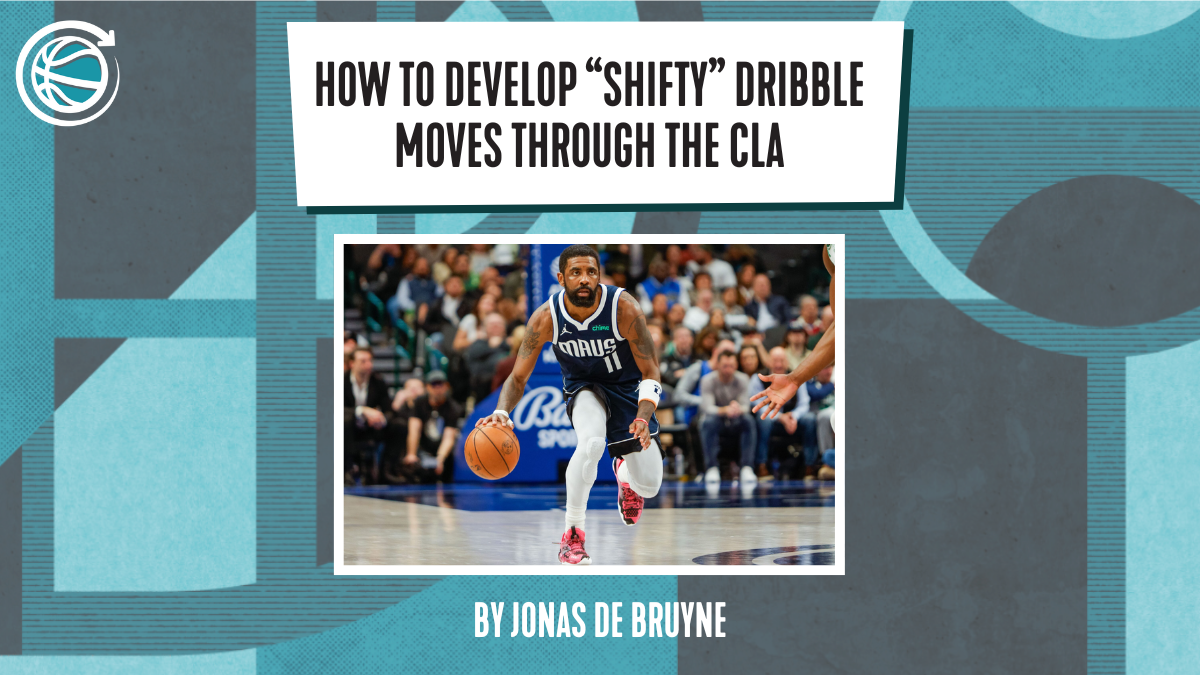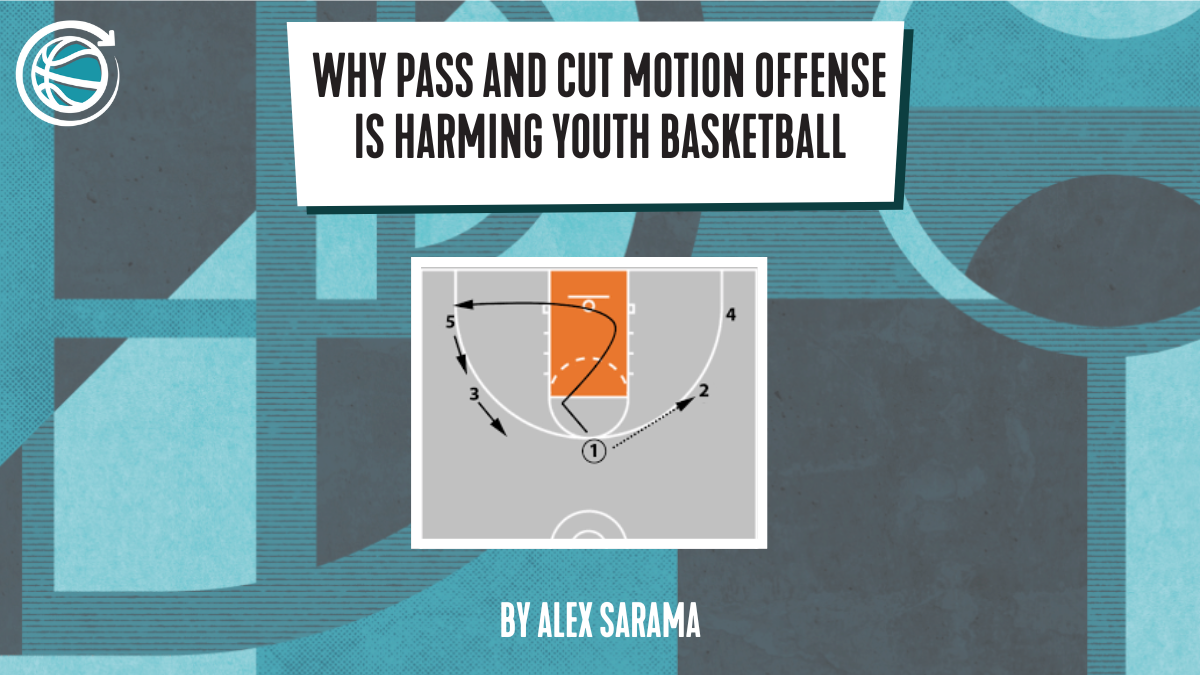How to Develop ‘Shifty’ Dribble Moves through the CLA
A while ago I had a really good conversation with another coach here in Germany. I re-posted a particularly ‘shifty’ dribble move on Instagram, and he wanted to know how I would ‘teach’ that using the CLA. So here is what I would do to develop this:
Design the Activity
Design a SSG, where the player may encounter an affordance for a similar move to emerge. It is important to remember however that the individual movement solution gets shaped by the environment: not the other way around. Furthermore, the exact version of this ‘move’ will not emerge as we see it emerge in game because not only are the constraints impossible to replicate, but they may also not be functional for every player.
With this premise in-mind, we could start by playing off the dribble 1-on-1:
- Play in 1/3 of the halfcourt, with the half court divided into three big areas: sideline to slot, slot-slot and slot to sideline.
- O1 starts behind the half court line while X1 starts inside the 3PT-area. From the moment O1 enters the space it’s live and the defense can move.
- O1 can stay on offense if it’s a score. They start every rep in another 3rd of the half court.
This way we can ‘design in’ affordances which facilitate the emergence of shifty dribble moves.
Let the Magic Happen
During these types of practice activity, it’s important for the coach to observe what functional movement solutions the players come up with. This way the coach can adapt the SSG in whatever way they want. However, it’s possible that even if you start constraining the player (double points for a certain outcome), the player may not attune to the information that the coach intends. This is because every player is different, so this is expected. Coaches simply have to keep changing constraints while also appreciating that each player will move differently. Certain ‘moves’ may never be functional for a specific player.
DOWNLOAD OUR PLAYER DEVELOPMENT SSGs BOOK
Success Rate
If you see that the players are trying, but struggling too much, you could scale down the activity (task simplification). In this SSG, it would be possible to give X1 a basketball that they hold with both hands. This way the success rate is higher. It could also be possible that for some players it’s too easy, so you can maybe make a 1-on-2 out of it, with the X2 starting 2 metres behind O1.
Let Them Experiment, but Keep Em’ Coupled (Rob Gray)
In the end, you should keep in mind that this way of coaching takes more time than a more traditional/ linear approach to work on “the perfect technique”. This linear approach to player development may look something like the following:
- Teaching a move on-air from a static start
- Performing the move on-air from a dynamic start.
- Performing the move against a dummy defender.
- Performing the move against a live defender.
- Playing in a more complex SSG.
In the short term, you would probably get more out of this session because the ‘moves’ would appear consistently.. But in the longer term, the learning effect will not be as effective. There is no perfect technique, because everyone is different. The only thing that counts is what works and what is functional for the player in a certain situation.
Stay updated with our latest ideas and advancements within the coaching world by visiting the Transforming blog and discover more practical ideas.
Guest blog by Jonas de Bruyne

Oct 28, 2024
admin



